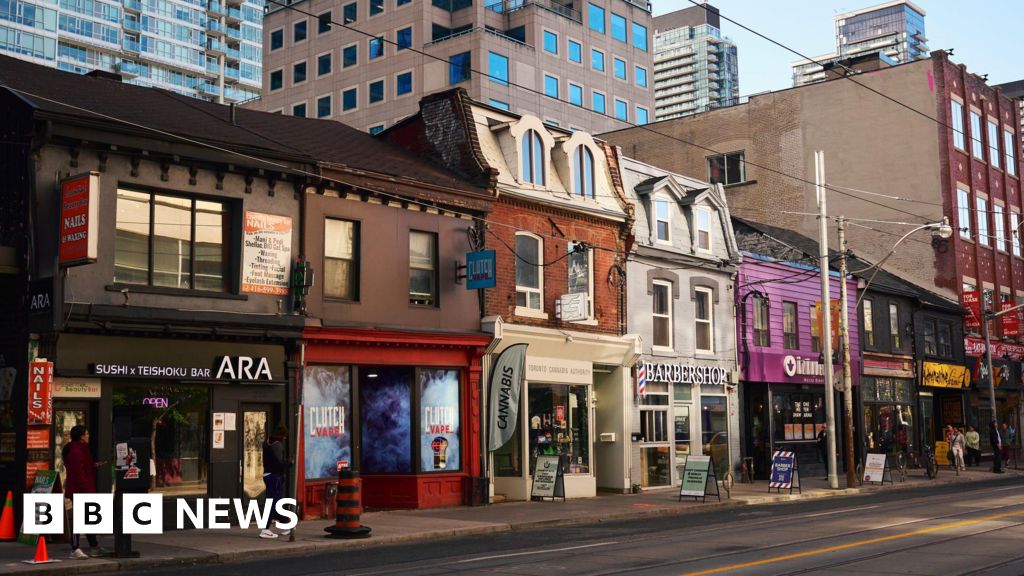Most travelers don’t consider Vietnam a hiking destination, but take it from someone who lives there: The country has plenty of great treks if you know where to look. In the north, the Hoang Lien Mountains are the tapering, tail-end of the Himalaya; in the south, the Da Lat Plateau rises sharply from sea level to over 2,000m, and the underexplored Annamites line Vietnam’s spine.
We look at four accessible hikes for those looking to escape Saigon’s eight million scooters.
A map showing the location of the four hikes. From top to bottom: Fansipan, Son Doong, Bi Doup, Nui Chua. Photo: Google Maps
Fansipan Mountain
Let’s start with the roof of Vietnam, 3,147m Mount Fansipan, the highest peak in the Hoang Lien Mountains. These run along Vietnam’s rugged northern border with China. The summit has been extensively developed, with walkways and two pagodas at the top of an (admittedly beautiful) cable car ride that leaves from near the local town of Sapa. However, for those who’d like to summit on foot, this is a hard, no-frills two or three-day hike through dense jungle.

The government has extensively developed Fansipan’s summit. Photo: Martin Walsh
Different routes
The most direct route begins in the stepped rice paddies just outside Sapa. From the ethnic H’Mong village of Sin Chai at approximately 1,260m, the trail quickly disappears into the forest in Hoang Lien National Park. Though this is the shortest way to the summit (the ascent can be completed in a day), the trail is unclear, and it is easy to get lost. Instead, most independent hikers and guided groups do the Tram Tom Pass Trail.
The summit can be reached in a day on the Tram Ton Pass route too, depending on the weather and your fitness. However, there are two camping areas en route for those who would prefer to take their time. The first is at roughly 2,200m, and the other is fairly near the summit, at 2,800m. The trail starts in dense forest before climbing to exposed, undulating ridgelines. The final section to the summit is very steep.

Ridgelines high on Fansipan Mountain. Photo: Martin Walsh
The longest route starts at Cat Cat Village and runs approximately 20km. This trail has the most altitude gain at around 1,900m, and it takes three or four days if you also descend on foot.
Nui Chua (God Mountain)
Perhaps the least-known hike on this list, Nui Chua Mountain is not very high, only 1,039m. Situated on Vietnam’s south-central coast in Ninh Thuan, the hike still requires almost 1,000m of elevation gain. This region is extremely dry, and the heat makes what should be an easy two-day hike more challenging.
Inside a national park, a guide is required for the hike to Nui Chua’s summit. Most of the guides are Raglai — one of 54 ethnic groups in Vietnam — and speak a different language from the majority Kinh. Part of this hike’s appeal is the guides’ knowledge of the forest here. They will stop to pick fruits you’ve never heard of and collect herbs that grow only at specific elevations to cook with dinner. Both times I’ve done this hike, the evening meal has been incredible, with chickens roasted over an open fire and the guides producing homemade rice wine. The campsite sits in a grassy clearing created by bombing during the American War. (The Western world tends to call it the Vietnam War, but the Vietnamese, understandably, do not.)

Raglai guides and porters cooking chicken. Photo: Martin Walsh
The next morning, you climb to the summit, passing through chunks of primary mixed forest interspersed with swaying grasslands. Then it’s a unrelenting descent back down to a Rag Lai village on the edge of the park.
This national park is rarely visited by tourists, so knowing some Vietnamese or traveling with a Viet would make organizing this hike much, much easier.

Nui Chua summit. Photo: Martin Walsh
Bi Doup Mountain
At the southern end of Vietnam’s Central Highlands, Bi Doup Nui Ba National Park is an enormous sweep of forest and mountains just north of the city of Da Lat. There are plenty of good hikes possible in Bi Doup Nui Ba, including to 2,287m Bi Doup Mountain, the highest point in southern Vietnam.

Bi Doup Nui Ba. Photo: Martin Walsh
The trail starts from a forest ranger station near Da Chais, about 40km from Da Lat. It’s a relatively easy two-day hike covering around 26km, first through pine forest and then through mixed broadleaf forest as you get deeper into the park. Getting to Bi Doup’s summit requires some scrambling for the steep final ascent. The overnight campsite is at 2,000m.
The area around the mountain is particularly good for several rare bird species endemic to the Da Lat Plateau, such as collared laughingthrushes, white-cheeked laughingthrushes, and Vietnamese cutia.

An endemic white-cheeked laughingthrush. Photo: Martin Walsh
After the peak, most hikers head out through coffee plantations to emerge back in Da Chais near the village of K’long K’lanh.
Son Doong and Phong Nha-Ke Bang
Discovered in 1990 and first surveyed in 2009, Son Doong is the largest cave in the world by volume (38.5 million cubic meters). It’s an expedition to get there, requiring a huge team of porters and guides, and only one company is currently allowed to take tourists: Oxalis Adventure. As a result, it’s extremely hard to get a place on an expedition (only 1,000 places are available per year, and they book up far in advance) and expensive for Vietnam ($3,000). But for those with the money — and who are prepared to wait — it’s one of the world’s best adventure treks.

Hang En cave is part of the expedition to Son Doong. Photo: Shutterstock
The expedition begins from Phong Nha in central Vietnam and takes four days through the jungle of Phong Nha-Ke Bang National Park. Hikers cover 25km (with 8km inside caves), and the trip requires some basic climbing and rappelling with safety equipment, including climbing a massive rock wall inside Son Doong, nicknamed The Great Wall of Vietnam.
Along with the great wall and an underground river, collapsed ceilings have created unique jungle ecosystems inside the cave, inspiring the first cavers to name the area “Watch out for Dinosaurs.”
If your budget doesn’t stretch to Son Doong, there are over 400 more caves to explore in Phong Nha-Ke Bang.
Source link














